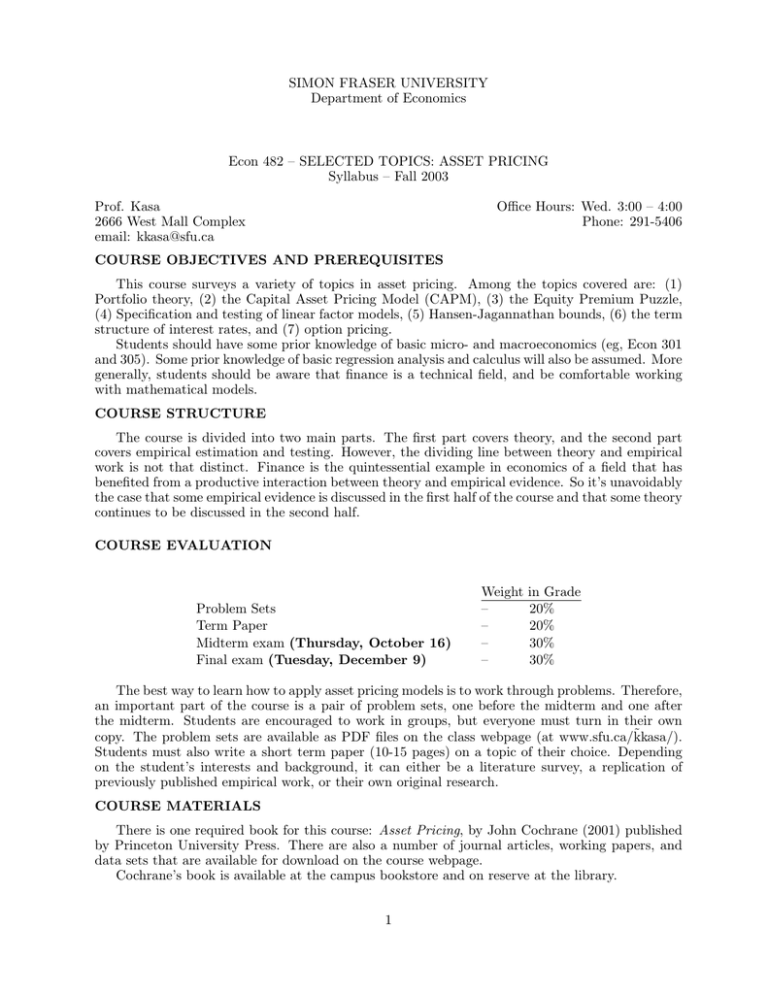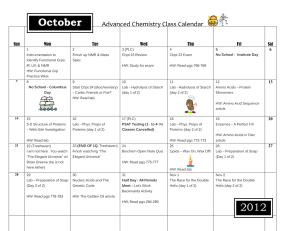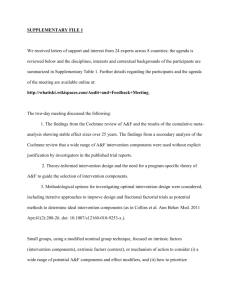SIMON FRASER UNIVERSITY Department of Economics Syllabus – Fall 2003
advertisement

SIMON FRASER UNIVERSITY Department of Economics Econ 482 – SELECTED TOPICS: ASSET PRICING Syllabus – Fall 2003 Prof. Kasa 2666 West Mall Complex email: kkasa@sfu.ca Office Hours: Wed. 3:00 – 4:00 Phone: 291-5406 COURSE OBJECTIVES AND PREREQUISITES This course surveys a variety of topics in asset pricing. Among the topics covered are: (1) Portfolio theory, (2) the Capital Asset Pricing Model (CAPM), (3) the Equity Premium Puzzle, (4) Specification and testing of linear factor models, (5) Hansen-Jagannathan bounds, (6) the term structure of interest rates, and (7) option pricing. Students should have some prior knowledge of basic micro- and macroeconomics (eg, Econ 301 and 305). Some prior knowledge of basic regression analysis and calculus will also be assumed. More generally, students should be aware that finance is a technical field, and be comfortable working with mathematical models. COURSE STRUCTURE The course is divided into two main parts. The first part covers theory, and the second part covers empirical estimation and testing. However, the dividing line between theory and empirical work is not that distinct. Finance is the quintessential example in economics of a field that has benefited from a productive interaction between theory and empirical evidence. So it’s unavoidably the case that some empirical evidence is discussed in the first half of the course and that some theory continues to be discussed in the second half. COURSE EVALUATION Problem Sets Term Paper Midterm exam (Thursday, October 16) Final exam (Tuesday, December 9) Weight – – – – in Grade 20% 20% 30% 30% The best way to learn how to apply asset pricing models is to work through problems. Therefore, an important part of the course is a pair of problem sets, one before the midterm and one after the midterm. Students are encouraged to work in groups, but everyone must turn in their own copy. The problem sets are available as PDF files on the class webpage (at www.sfu.ca/k̃kasa/). Students must also write a short term paper (10-15 pages) on a topic of their choice. Depending on the student’s interests and background, it can either be a literature survey, a replication of previously published empirical work, or their own original research. COURSE MATERIALS There is one required book for this course: Asset Pricing, by John Cochrane (2001) published by Princeton University Press. There are also a number of journal articles, working papers, and data sets that are available for download on the course webpage. Cochrane’s book is available at the campus bookstore and on reserve at the library. 1 COURSE OUTLINE AND READINGS I. THEORY (13 lectures) Sept. 2 – Introduction Cochrane text, Preface Sept. 4 – Empirical Overview Cochrane (1999a), “New Facts in Finance” Sept. 9 – Diversification and Mean-Variance Efficiency Campbell (2003), “Lecture Notes” (pgs. 1-11) Campbell (2000), “Diversification: A Bigger Free Lunch” Campbell (1999), “Who Should Buy Long-Term Bonds?” Sept. 11 – The CAPM Campbell (2003), “Lecture Notes” (pgs. 12-22) Sept. 16 – Utility-Theoretic Derivations of the CAPM Sept. 18 – The Consumption-Based CAPM/Stochastic Discount Factors Cochrane text, Chpt. 1 (pgs. 1-27) Sept. 23 – Applying the Consumption-Based CAPM Cochrane text, Chpt. 2 Sept. 25 – Contingent Claims Markets Cochrane text, Chpt. 3 Sept. 30 – Mean-Variance Frontiers and Beta Representations Cochrane text, Chpt. 5 (pgs. 79-86, 95-100) Oct. 2 – The Relationship Between Betas and Stochastic Discount Factors Cochrane text, Chpt. 6 (pgs. 101-113) Oct. 7 – Conditioning Information: Conditional vs Unconditional Pricing Models Cochrane text, Chpt. 8 (pgs. 133-141) Cochrane (1999b), “Portfolio Advice for a Multifactor World” Oct. 9 – Alternative Factor Pricing Models Cochrane text, Chpt. 9 (pgs. 149-162, 166-173) Oct. 14 – Pitfalls in Implementing Factor Models Cochrane text, Chpt. 7 Problem Set 1 due in class 2 Oct. 16 – Midterm Exam (Closed Book) II. ESTIMATION AND TESTING (11 lectures) Oct. 21 – Empirical Evaluation of Discount Factor Models Using GMM Cochrane text, Chpt. 10 Oct. 23 – Regression-Based Tests of Linear Factor Models Cochrane text, Chpt. 12 Oct. 28 – Time Series Evidence: Mean Reversion and Excess Volatility Cochrane text, Chpt. 20 (pgs. 387-420) Cochrane (1997, pg. 3-14), “Where is the Market Going? Uncertain Facts and . . . ” Oct. 30 – Cross-Sectional Evidence Cochrane text, Chpt. 20 (pgs. 434-452) Nov. 4 – Recent Extensions of the CAPM Jagannathan & McGrattan (1995), “The CAPM Debate” Fama & French (1992), “The Cross-Section of Expected Stock Returns” Nov. 6 – The Equity Premium Puzzle Cochrane text, Chpt. 21 (pgs. 455-465) Nov. 11 – No Class (Remembrance Day) Nov. 13 – The Equity Premium Puzzle: Proposed Solutions Cochrane text, Chpt. 21 (pgs. 465-484) Cochrane (1997, pg. 15-40), “Where is the Market Going? Uncertain Facts and . . . ” Kocherlakota (1996), “The Equity Premium: It’s Still a Puzzle” Nov. 18 – The Equity Premium Puzzle: More Proposed Solutions McGrattan & Prescott (2003), “Average Debt and Equity Returns: Puzzling?” Fama & French (2000), “The Equity Premium” Nov. 20 – Summary and Review of Empirical Work on Asset Pricing Campbell (2000), “Asset Pricing at the Millenium” Nov. 25 – The Efficient Markets/Behavioral Finance Debate Malkiel (2003), “The Efficient Market Hypothesis and Its Critics” Nov. 27 – The Efficient Markets/Behavioral Finance Debate Shiller (2003), “From Efficient Markets Theory to Behavioral Finance” Problem Set 2 due in class Dec. 9 – FINAL EXAM 3








